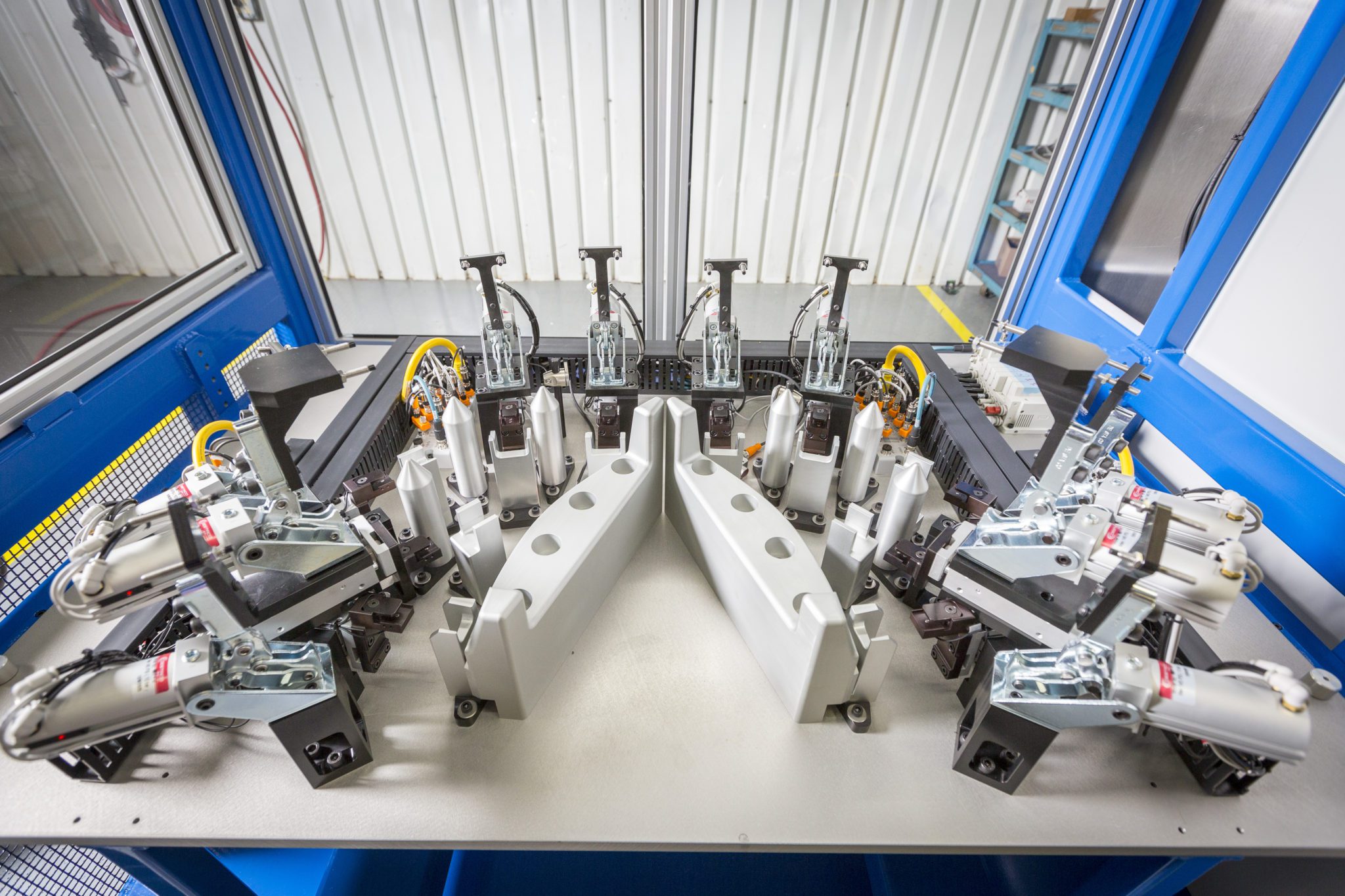Clip Installation Machine Systems
At AMS, we’ve honed our processes to propel your growth

Smart machine design
Custom engineering

Deep industry and application knowledge
Pick Up the Pace with Precision Clip Installation
Partner with AMS to streamline your clip installation operation.
What’s Holding Your Business Back?
Not taking advantage of innovations in clip installation automation could be costing you time and money. Missing the mark on even the smallest details can add up to big losses. Are you limping along instead of running full speed ahead?
Partner with AMS and take advantage of our:
- Engineering and design expertise.
- Deep experience in the automotive industry.
- On-time delivery guided by proven processes.
Pounding It Out but Not Pulling Ahead?
We understand that efficient assembly is the key to profitability. In this tight labor market, you also have to think about ease of training and long-term operator comfort. Customers are counting on you for fast and error-proof assemblies. You have to make every minute and dollar count.
Trust AMS to smooth the way:
- Deep application knowledge.
- 99.5% on-time delivery record and 97% customer satisfaction.
- 24/7 hotline for urgent support.
- Flexible “engineering only” option.
The Clip Installation Machine Features You Need
The key to successful clip installation is our innovative installation head and press platen design. AMS engineers each clip installation head specifically for each style of clip. Our clip installation heads feature:
Magnetic (not mechanical) retention of the clip
Exceptional ease of loading for operator
Adjustability in the X, Y and Z directions
sensors to confirm clip presence before cycling
Automation:
Go or No Go?
How would automation help your operations and how much would it cost? Find out fast with our online AMS RFQ tool. Don’t guesstimate: Submit a few project details online so you can make informed decisions.
The Dependable, Field-Tested Choice
There’s a good reason AMS systems are integrated into assembly lines throughout North America. Clip installation is one of our core competencies. We’ve honed our craft in this application for years. You can count on our in-depth expertise in building semi-automated equipment for installing door panel clips onto automotive interior plastic door panels, bezels, quarter panels, knee bolsters, pillars and other interior trim components.

We know you have to produce day in and day out, so we design clip installation machines for maximum efficiency. We include programmable fiber optic sensors that relay information to the operator, effortless magnetic clip load design and head adjustability.
Lighted annunciator panels relay information to the operator in an easy-to-read format. Sensors allow the machine to cycle only when all clips have been loaded. Other technology can be incorporated into clip machines, including component sensing, function testing, ultrasonic welding, bar code scanning and color matching. Pass-through style machine design enables one or two operators to run parts on the same machine. With all these features, you can take your clip installation to the next level.
Surefire Automation Plan
- Share your automation goals with one of our application engineers.
- Share your vision and goals.
- Grow your business with custom automation systems.
Clip Installation FAQs
Get the answer to Frequently Asked Questions (FAQs) on clip installation
Clip attachments are a novel way to assemble removable parts together where you don’t need the higher strength or cost of threaded fasteners. Clips are used anywhere a light-duty, low-load panel, cover or fastening point is needed. Common applications span the automotive, medical equipment, consumer appliance, electronics and commercial machinery industries. In automotive manufacturing alone, clips are used to attach all types of trim panels, framed fabrics, bezels, light diffusers, wire harnesses, aesthetic accessories and much more. Similar applications outside of automotive include side panels for laundry appliances, screen bezels around TVs and bump guards on medical crash carts.
By their design, clips rely on friction, compression, tension or shear interference to make their connections. Given the forces and temperatures involved with automotive applications, typically only friction and edge shear connection styles made of metal or high-density plastic clip materials are acceptable. That leaves us with the most common types of clips used in automotive applications as arrowhead, fir tree, edge bite, pinch, ring, stud-mount and wire retainer clip types. Over the long history of the auto industry, vehicle OEMs have designed thousands of unique clip designs and hundreds of naming conventions, so don’t be surprised if any of these types don’t sound familiar: You might just know them by another name.
Automated clip installation machines mechanize the placement and insertion of clips. Instead of manual processes, clip machines use robotic fixtures and tooling to hold clips, orient them to their connection points on an assembly, move and press the clips into position, and confirm that the clips are properly attached upon completion. Advanced sensors and motion actuators align and press clips into place precisely to specification, and can print off quality control reports afterward that document that these specifications were fully achieved.
Modern automated clip attachment machines can complete hundreds of clip insertions each hour, around the clock and with limited human involvement. PLC-controlled clipping sequences and onboard sensors ensure that clips are inserted correctly, catching any rare mis-installations immediately to avoid downstream rework. Operators can load machines very quickly, allowing one operator to manage multiple machines concurrently. And as production requirements change, automated clip machines can be easily reconfigured to work with updated clip styles, part layouts, production rates and design complexities (such as adding ultrasonic staking capabilities).
Poka-yoke protections are extra steps added to a production process that seek to make errors impossible or near impossible. For automatic clip machines, there are a few key ways to automate out errors. Two-handed start buttons are used to assure that operators have both hands out of harm’s way before starting up a machine. Magnetic clip holders and clip position sensors make sure that all clips are loaded before starting insertion, as well as confirm clips are properly inserted upon completion. Lastly, motion interlocks are included to automatically halt the machine if any unexpected resistance, movement or other adverse conditions are detected.
